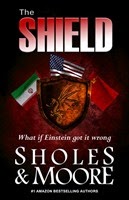Jordan Dane
@JordanDane
Inspired by Joe Moore’s excellent post yesterday on Narrative Voice, I thought about my process for making characters distinct in the worlds I build in a novel. We are all influenced by where we grew up or where we live now, our race, social class, jobs, friends, religious beliefs, and other factors. Any character an author creates is no different. It’s not enough to picture their outward appearance. Give them a background and sphere of influence. Sometimes it helps for me to hear their voices in my head. (Yes, that’s allowed without taking medication. Special dispensation for authors.)
I recently binged on Sherlock (a la Benedict Cumberbatch) and Sleepy Hollow (British star Tom Mison’s reinvented Icabod Crane). I loved the notion of Sherlock’s brilliant mind leaps and I also loved the idea of a more stilted proper speech of an educated scholarly man similar to the Oxford professor of Icabod Crane, but I wanted my character to be American with a brash punch to him when he wanted to make a point. Those rare moments of punch give him a sense of gravitas and unexpected depth of personality. Being familiar with these TV characters, it became a fun challenge to meld their distinct voices and mannerisms into my American FBI profiler haunted by visions of crime scenes when he sleeps.
It’s amazing fun when you can hear the character voice in your head and write with a good pace, without filtering the words you type on the page. I call this “free association” where you channel the voice of your character without having to think about it. Over the years I’ve gotten better at this, which also comes with a cautionary warning born of experience. Often if you THINK in free association without filter, you will SPEAK that way too. Not always good in a social setting. #FilteringSavesLives
Five Key Ways to Give Your Character a Distinct Voice
1.) Word Choices:
- What is your character’s vocabulary?
- How educated is he/she?
- How much does race/culture play into his/her narrative?
- Are there regional influences on his/her speech? (I feel most comfortable writing in Midwest, TX, OK, and Alaska, places I’ve lived and worked.)
- Is slang or pop culture references a part of his/her speech patterns? (A secondary character can use slang as a way to distinguish that character’s voice from the protagonist. Fewer tag lines necessary.)
- How old is your character? (Don’t force a more youthful influence if you aren’t comfortable, but be aware of generation gaps.)
- Is your character from another country? (Word choices and even spellings can indicate where a character is from. I wouldn’t take any short cuts here. If your character is British, but YOU as the writer aren’t as familiar with nuances of a particular region in the UK, get help from a native speaker or build a backstory where your character has other influences that will temper their voice into more of a melting pot.)
- What gender is your character? (Gender can play a big part in making narrative distinctive. Avoid the cliché, but men and women are fun to contrast, no matter what your vision is for unique individuals.)
2.) Confidence Level:
- If your character is an assertive cop or from a military background, he or she would expressive themselves in a more direct and decisive fashion.
- How forceful or passive is your character? (A deliberate use of the passive voice can be an indicator of a submissive character. Use of “Uh” or “Um” can indicate hesitation and lack of self-confidence.)
- Does he or she take charge and have a no nonsense approach to dealing with conflict or do they only react and let others take over? (Even their clothes choices can indicate how confident they are.)
3.) Quirks/Mannerisms:
- Does your character have distinctive habits or mannerisms? (Sometimes a facial tic can be fun to exploit at key times.)
- Does your character have a unique hobby or interest that affects how they speak? (Someone into sailing could infuse nautical words, for example.)
- What humor do they have, if any? (Characters can have humor play out cynically in their internal monologue, yet their dialogue lines don’t reflect humor at all. This can be great for comic relief. Also characters can have distinctive sense of humor from very dry to crass bathroom humor.)
4.) Internal/External Voice:
- Your character might have a day job, but at night they come home to a family with small children or a demanding pet. How does their internal voice change when they let their guard down? Do their internal thoughts show a more tender vulnerability? This duality can bring depth and complexity to your character.
5.) Metaphors/Similes/Comparisons:
- I love imagery, but let’s face it, some characters will never think in terms of elaborate metaphors. It would not make sense to force it. In the case of my educated professor type, for example, his narrative could be infused with imagery/metaphors or perhaps literary influences because that’s how his mind works. He sees reality of the world around him yet he longs for the fictional world of his favorite book. If my character is a street kid without much education, he might be more influenced by rap music lyrics or the daily hustle on the street where he fast talks to survive everyday. No matter who your character is, they would have their own frame of reference for making comparisons.
FOR GRINS & GIGGLES: I took a little champion New York Times Online Test of 25 questions that analyzed how I spoke to determine where I live. (Best suited for residents of the U.S.) The test came back with a result that I lived in Rockford Illinois, New Orleans, and Rochester NY. Totally wrong since I live and grew up in Texas, but my mother was a Yankee and I’ve lived all over the country, so apparently that has also influenced me.) Take the test and see what your results are. Did they get it right? Let us know.
For TKZ Discussion:
How do you infuse a unique voice to your character? What are your key influences? If you’ve written characters outside your comfort zone, what tricks can you share about how to make that work?






